Basically, all of the links on this page are affiliate links. I receive a commission (at no extra cost to you) if you make a purchase after clicking one of the affiliate links below. Read our Affiliate Link Policy for more information.
My favorite way to build this class is to target an all up weight of about 300-350 grams. This gives a disc loading similar to a very light 5” racing drone. So you get racing drone acceleration and handling with freestyle drone durability. If your goal is a more “flingable” freestyle build, shoot for about 400 grams. I’d avoid going over 400 grams in this size class.
All of the builds on this page should come out around 300-350g when paired with an 850 mAh 4S battery. To add weight, just use a slightly bigger battery.
A build in this class hasn’t got the power to carry a full size GoPro with authority. So I just don’t carry a GoPro! Since I don’t have to worry about breaking a GoPro, I can really cut loose and try tricks I might be too scared of with a five inch. The smaller size and weight of the 4” freestyle means it’s more durable than a 5”. But its 2004 motors give plenty of power, especially when paired with a slightly lighter battery.
The end result is a quad that has all the fun and performance of a five inch, with less of the worry about taking big risks and damaging things. The only tradeoff is that you have to settle for DVR recording instead of GoPro, and a lot of the time, that’s just fine by me.
CATALYST MACHINEWORKS SHOCKER 4″
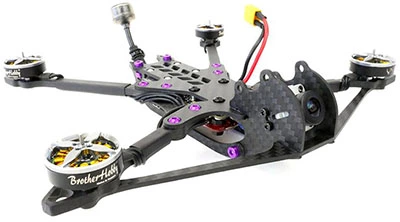
The Shocker 4” is the quadcopter that made me realize the 4” freestyle class had finally come into its own. The frame is durable as hell, especially when you use the front cross brace (and you should). The weight is centralized for good handling. The frame’s design is thoughtful, and can accommodate a variety both analog and DJI hardware.
The main downside of the Shocker is the same as other Catalyst frames. They’re clever, but also a little complicated and fiddly. Repairs can require removal of an annoying number of screws. Keeping spare parts on hand can be difficult since the frame has a large number of different parts. If you buy this frame, buy a 2nd one while you’re at it, so you’re sure to have spares if you need them.
The CMW Shocker 4” is one of my favorite quads to own, and I find myself coming back to it all the time. If you’re looking to get the exact experience I described at the top of the page, the CMW Shocker is the one to get, since it basically defined the category for me.
Let’s start with the BQE RipSqueak 4”, the budget option in this category. It’s simple, incredibly durable, and super compact. The “short-body” version doesn’t fit a 20mm accessory in the rear of the frame, so if you need to use a 20mm vTX or Caddx Vista, you’ll want the “Digi Edition” (not yet launched at this time). The short-body frame is designed for a micro-sized vTX like the TBS Unify Pro32 Nano. Be sure to order the 4″ arms, since the body for the BQE is the same for all arm sizes. Incidentally, this means you can easily switch from 4″ to 3″ or even 2.5 or 2″ simply by changing out the arms, motors, and props.
The Catalyst Machineworks Shocker 4 is described above in the Bind n Fly section, so we won’t repeat ourselves here.
The Micro Apex takes everything people love about Mr. Steele’s favorite frame and shrinks it down from 5” to 4”. As with all ImpulseRC products, the fit and finish are superb. Durability is best in class. And flight characteristics will be as similar to a 5” as possible, due to similar geometry. It even comes with a full crash damage warranty for 1 year!
BQE RIP SQUEAK v2
4″ FRAME
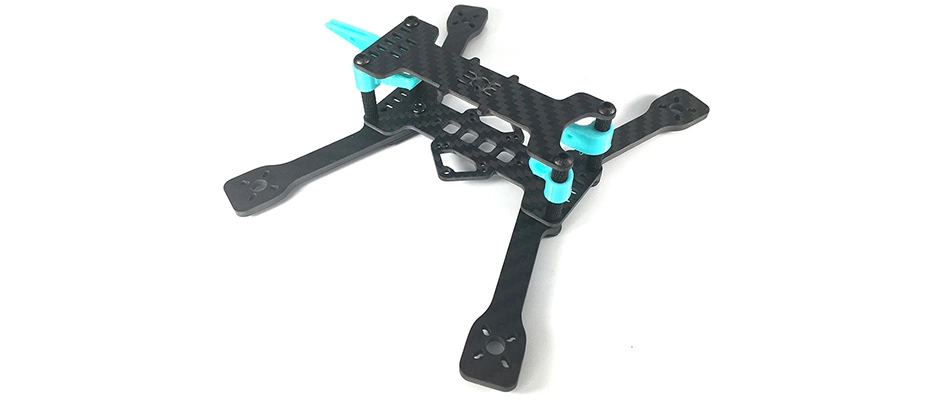
CATALYST MACHINEWORKS SHOCKER
4″ FRAME
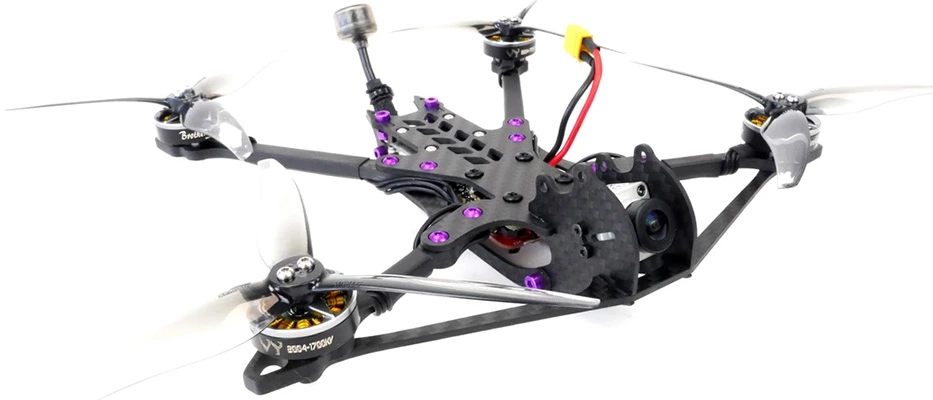
MICRO APEX
4″ FRAME
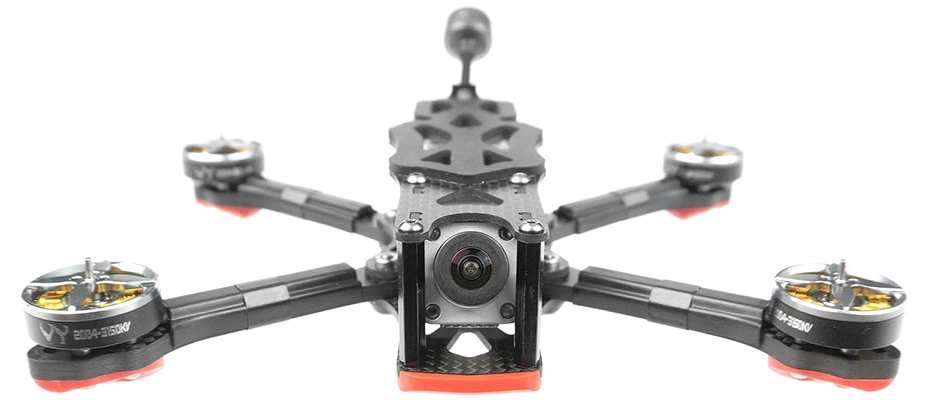
The 2004 was the motor that made 4” freestyle viable. It’s the perfect combination of light weight, responsiveness, and power for a 4” build around 300 grams all up weight. The wide, flat stator helps keep the motor cool. This means you get flight characteristics more like a 5” than a 3”.
The main downside of this motor size is its durability. The motor shaft tends to break or bend on hard impacts, but that’s sort of inevitable when a 2mm shaft is paired with a wide 20mm stator and a 4” prop. The longer lever arm puts excess torque on the shaft and it breaks. The BrotherHobby TC and the Axis Flying motors have a 3mm shaft, which improves durability a lot, but nothing is bulletproof.
In this size category, a lot of people argue that there’s not much benefit to 6S batteries. Assuming you decide to go with 4S, choose something around 3150 kv. The equivalent for a 6S battery is around 2000 kv. Motors below 2000 kv are intended more for long-range cruisers or larger props, and are not ideal for freestyle, but might be a good choice if you want to trade top end power for longer flight time.
AXIS FLYING AF204
1810 kv / 2910 kv
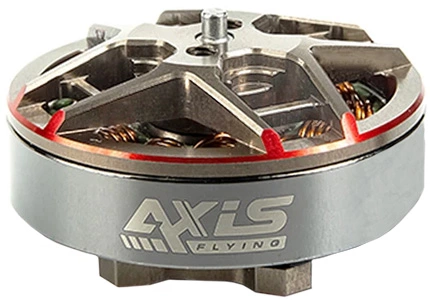
Axis Flying was founded by some employees of T-Motor who broke off to form their own company. With a pedigree like that, you’d expect Axis motors to be the best! The company is still new enough that we can’t say for sure whether they deserve the premium prices they ask for their motors. But they sure look good on paper, if you’re willing to take a chance.
The Axis 2004 motor comes in slightly lower kv for this class. The 4S motor is 2910 kv, and the 6S motor is 1810 kv. As a result, these motors will make a bit less power than their higher rpm alternatives, but flight time will be a little longer.
UMMAGAWD AEROLIGHT 2004
2400KV (4S) / 1600KV (6S)
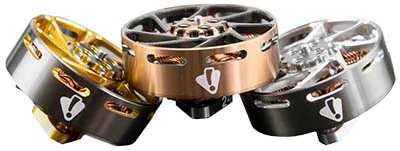
Tommy Tibajia developed this motor specifically for use with the 2Fiddy. One thing that makes it unique is its 2-screw base, which matches the arms on the 2Fiddy to save weight.
NEWBEEDRONE FLOW 2004
1750 kv / 2000 kv / 2450 kv / 3100 kv
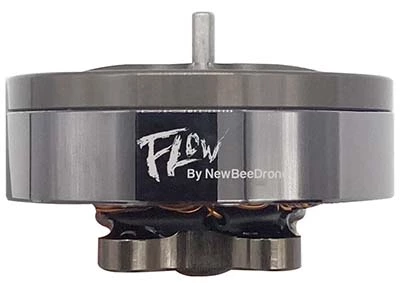
The NewbeeDrone Flow line has always offered great quality and performance for a mid-tier price. But there was only one problem: their 2004 motor wasn’t the right kv for this class. So NewBeeDrone made one special just for us!
There’s another great thing about the Flow motors: they’re available in 4-packs for a discount, if you know you’re going to need spares (and obviously, you’re going to need spares).
For use with a 4S battery, choose the 3100kv version. The 2000 kv is perfect for a 6S battery.
The 1750 kv and the 2450 kv are actually intended for sub-250g builds running 5″ props, so they’re not ideal for this category. But if you wanted to give up some power in exchange for longer flight time, you might use the 1750kv on 6S with a 4″ prop. And the 2450 kv might do the same thing if you were using 4S batteries.
MY PERSONAL FAVORITE
RUNCAM PHOENIX 2 JB EDITION
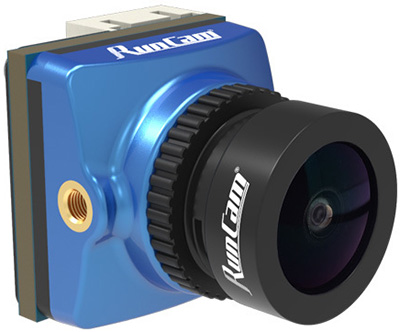
I believe that an FPV camera’s job is to communicate information to the pilot so that they can fly better. That means the best image for FPV is not always the one that looks the best to spectators. I worked with Runcam to customize the Phoenix 2 to deliver the things I look for in an FPV camera.
The contrast and brightness on the JB Phoenix 2 have been tweaked to maximize dynamic range, so you see details in shadow and highlight. Sharpening has been lowered to reduce haloing and shimmer. Finally, I asked Runcam to add digital camera control capability, so you can tweak the camera settings using your flight controller, instead of having to carry a camera joystick with you to the field.
The only way to truly know if this camera is best for you is to take a look at the image in my review.
CADDX BABY RATEL 2 NANO
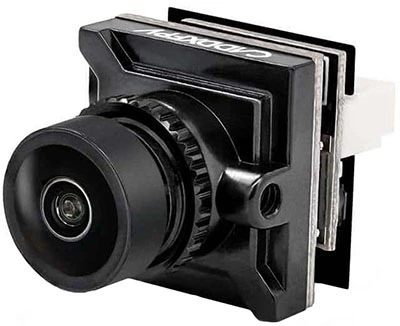
This camera is “nano” sized (14mm wide). But all the frames on this page are sized for “micro” cameras (19mm wide). So why are we recommending it? It’s super lightweight, has an excellent image, and isn’t too expensive. You might need to get or make some 3D printed parts to fit it into the frame, but it’s worth the hassle.
BEST FOR LOW-LIGHT FLYING
FOXEER MICRO CAT V3
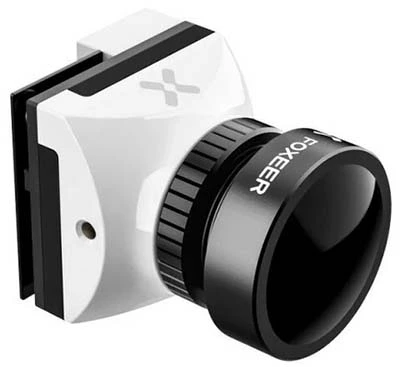
None of the typical FPV cameras are true night-vision cameras, but the Foxeer Cat V3 is as close as you’re likely to get. The Cat has higher light sensitivity than other FPV cameras, to make flying at dusk or under bright moonlight as easy as possible. The big objection to true “starlight” cameras is that they’re unusable in daytime. Fortunately, the Cat avoids that problem. Its daylight image is perfectly usable, if not quite on par with the best dedicated daylight cameras. If you’re looking for one camera to fly at high noon or after dark, the Foxeer Micro Cat is the one we recommend.
There are three important things to know about video antennas. First, they come in left-handed (LHCP) and right-handed (RHCP) varieties, and you must put the same variety on your quadcopter and your goggles. Most pilots fly RHCP, and that’s what I recommend you start with too. There isn’t any performance difference, but having the same type as everyone else will let you watch them in your goggles.
Second, they come with different connectors. Video transmitters typically have U.FL or MMCX connectors, due to their small size. These may plug in to a “pigtail” wire that ends in an SMA or RP-SMA connector. For racing, it’s most common to buy an antenna with an MMCX or U.FL connector, because it saves size and weight compared to a pigtail. These antennas are typically held to the frame with 3D printed accessories. Keeping the antenna close to the frame vs. out on a long stalk shortens the range of the video signal (not really an issue for racing) but increases durability.
Third, you should never power up your video transmitter without an antenna attached. This can damage or destroy the video transmitter.
LUMENIER AXII 2 U.FL & MMCX
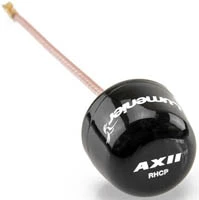
TBS TRIUMPH PRO U.FL & MMCX
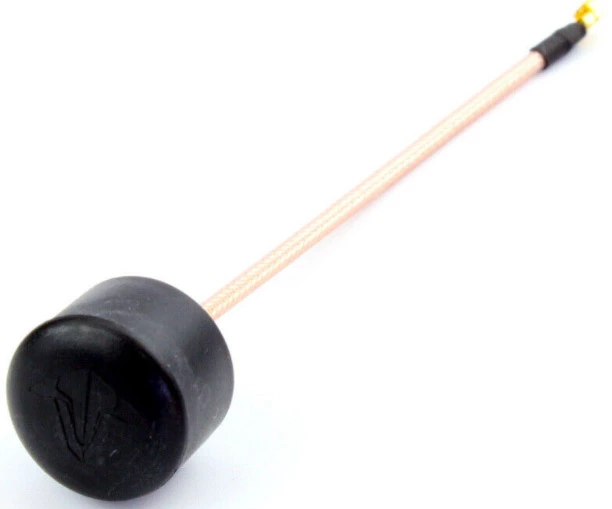
LUMENIER XILO AXII U.FL & MMCX
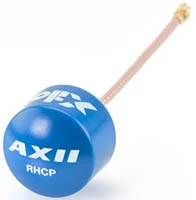
FOXEER LOLLIPOP U.FL & MMCX
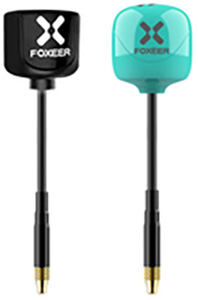
Because the weight of this class of quads is limited to about 300-400 grams, the battery selection is also fairly limited. The ideal size for this category is an 850 mAh 4S with an XT30 connector. A larger battery around 1000 mAh will give longer flight time and more “flingable,” less nimble flight style; you’ll also have to switch the quad to an XT60 connector, since packs this size seldom come with XT30.
If you’re determined to fly 6S voltage, the equivalent size battery would be around 550 mAh, but here’s the issue: there are almost no 6S packs sold in that size. And frankly, we’re not convinced there is as much advantage in 6S at this size of motor and prop.
RDQ
850 mAh 4S XT30
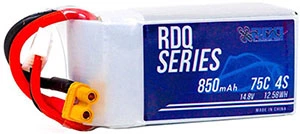
GNB
700 mAh 4S
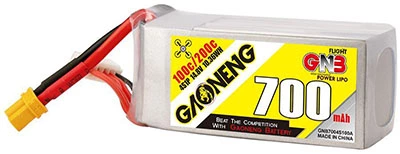
IFLIGHT FULLSEND
850 mAh 4S XT30
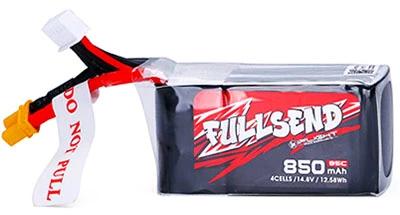
RDQ
6S 650 mAh XT30
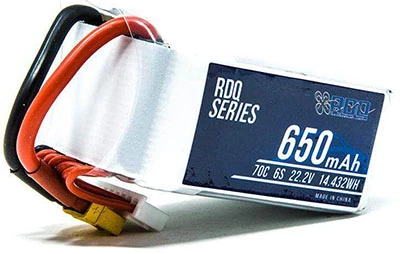
TATTU R-LINE
6S 650 mAh XT30
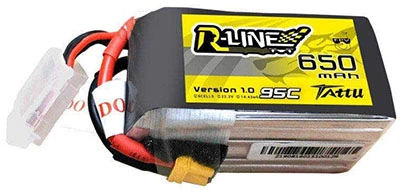
IFLIGHT FULLSEND
6S 850 mAh
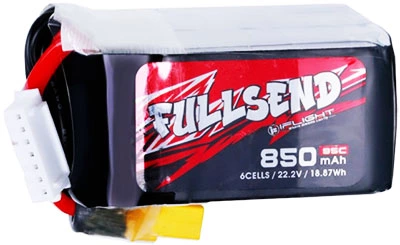
Normally, I try to include a variety of products in each category. But this is the rare case where a single product is the clear winner over everything else available. If you’re building a quad based on the parts on this page, this is the only prop I recommend. There are a few other great 4” props, like the Emax Avan, but they’re made for motors with 5mm shafts, and all the motors on this page are T-mount to save weight.
To be sure, I asked Ahren Ciotti, the self-proclaimed Micro King. He said, “The Gemfan prop is good enough that if it’s the only one you mention you’re actually helping. Great mix of weight, power, and durability.
GEMFAN HURRICANE
4023R
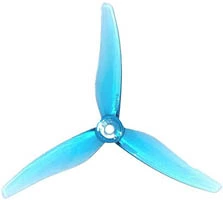
GEMFAN HURRICANE
4024-2
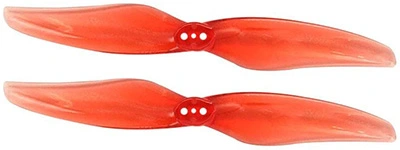
To be sure, I asked Ahren Ciotti, the self-proclaimed Micro King. He said, “The Gemfan prop is good enough that if it’s the only one you mention you’re actually helping. Great mix of weight, power, and durability. Later, we decided we should add a 2-blade prop for those who want a little longer flight time with less power, so we did.
FPVCYCLE “CAP/DIODE SYSTEM”
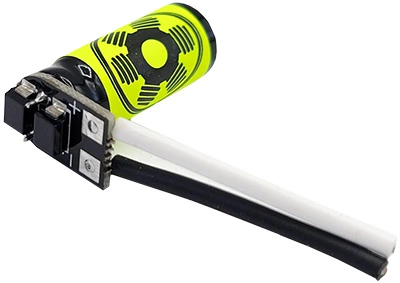
Everybody knows that putting a capacitor on your build gives cleaner video and helps protect your ESC and other electronics from damaging voltage spikes. But capacitors can only do so much, and big, sharp spikes can still get through. Enter the TVS diode. A TVS diode chops the top off of voltage spikes, almost no matter how big they are.
So why don’t people use TVS diodes more often? Two reasons. First, you can usually get away without one. Capacitors do an ok job most of the time. Second, the specs for a TVS diode are a little more difficult to interpret than a capacitor’s, so it can be difficult to be sure you bought the right one.
That’s where this product comes in. The FPVCycle cap/diode system combines a capacitor and some TVS diodes into a single unit with pre-soldered wires. Just solder it to your ESC power pads and know you’re as protected as you can be from voltage spikes and electrical noise.
FETTEC SPIKE ABSORBER
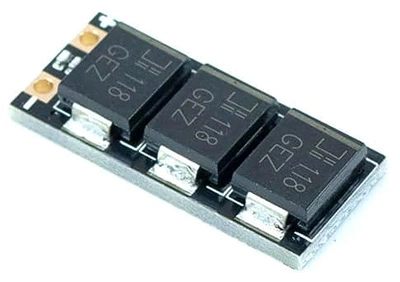
First, read the description of the FPVCycle cap/diode set, so you understand that a TVS diode is and why you need one.
The FETTEC spike absorber is just the TVS diode part of that, without the capacitor. Don’t go thinking you can omit the capacitor though! You’ve just got to provide your own. And you’ve got to solder on your own wires, while the FPVCycle one comes pre-soldered. And the FETTEC spike absorber is nearly the same price as the FPVCycle one. Just about the only thing the FETTEC product has over the FPVCycle is that it’s got three diodes, while the FPVCycle has two. Does that matter? I don’t actually know.
Bottom line: get the FPVCycle one if you can, but if it’s not available, the FETTEC is a fine alternative.
RUSH POWER FILTER BOARD
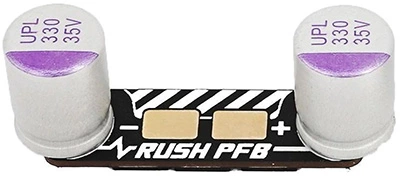
First, read the description of the FPVCycle cap/diode set, so you understand that a TVS diode is and why you need one.
The Rush power filter board includes a capacitor and TVS diodes, similar to the FPVCycle product. The main difference between them is the form factor. The Rush board is designed to be soldered underneath or on top of the XT60 pads of a Rush ESC. This clearly isn’t going to work for every ESC and every frame, but nothing’s stopping you from soldering wires to the Rush board and mounting it wherever is convenient. It’s definitely bigger than the alternatives though, and some builds will struggle to find a great place to mount it.
MATEK M8Q-5883
GPS MODULE
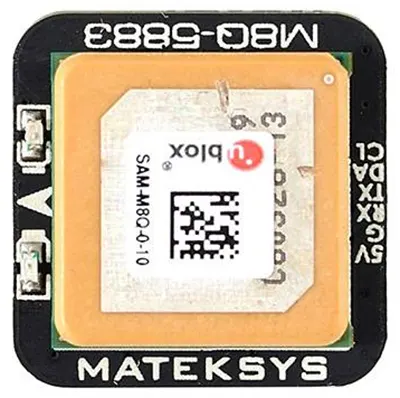
The GPS M8Q is one of the best-performing, full-featured GPS units you can put on a quadcopter. It’s got a built in, low-noise voltage regulator, RF filter, and low-noise amplifier mean the GPS unit gets the cleanest possible signals. Translation: you can lock more satellites, faster. It’s got a built in compass as well as GPS unit. And the included wire harness has high-quality silicone insulation, not the cheap plastic insulation used by most other GPS units.
IFLIGHT M8Q-5883
GPS MODULE
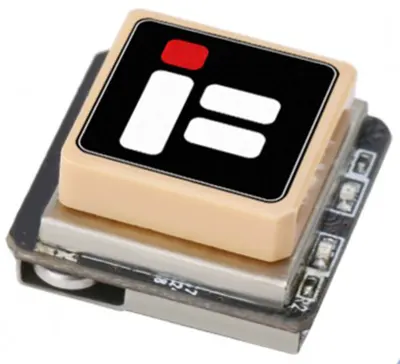
High-performing GPS units tend to be large. Which means most GPS units on small drones don’t perform very well. The iFlight M8Q is one of the best-performing tiny GPS units you can buy. It’s got a built in compass, as well as a low-noise amplifier for stronger GPS signal.
BEITIAN BN-220
GPS MODULE
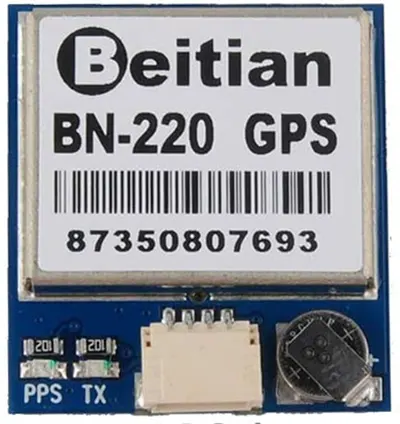
The BN-220 is probably the least expensive GPS unit you can buy. And its performance reflects it. In a perfectly clean environment, it performs well. But drones are not perfectly clean environments. They have a ton of electrical noise! Which means the BN-220 will often take forever to lock satellites, and when it does, it may not lock as many as you’d prefer. Frankly, there are a few people who think the BN-220 is not worth buying, but if you want to try to get into GPS assisted flight while spending the absolute least money possible, this is the one to get.
VIFLY FINDER V2 &
VIFLY MINI
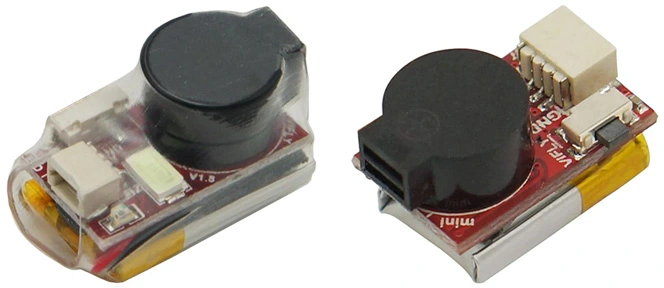
Let’s say you crash your quad somewhere and can’t find it. What do you do? Try to “home in” on the video signal? Beep the beeper? Maybe even arm the quad and listen for the sound of the props thrashing around in the brush. But none of that will help if your battery ejected in the crash and your quad is powered down.
That’s where the ViFly Finder comes in. It’s a super loud (up to 105 dB!) beeper with a tiny 1S lipo cell connected to it. A short while after the quad loses power, it begins beeping, and it doesn’t stop until you find it and disable it (or until the battery runs down). The Finder also acts as a normal beeper that you can activate with a switch on your controller whenever you want.
There are two versions of the Finder: the Mini and the Normal. The Mini is about 3g and its battery lasts about 7 hours. The Normal is about 5g and its battery lasts about 30 hours. In addition, the Normal has a light sensor that turns off the beeper at night. This avoids annoying your neighbors and wasting battery during time when you might not be looking for the quad.
More FPV accessories can be found on our HD Cameras, Backpacks & Other Accessories page.

